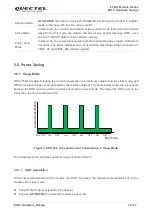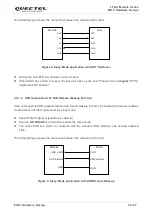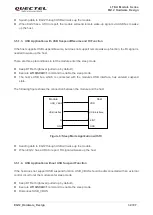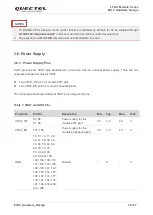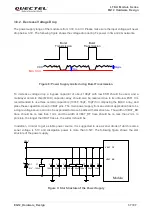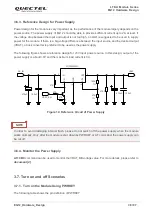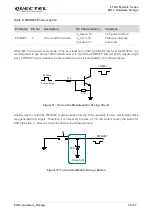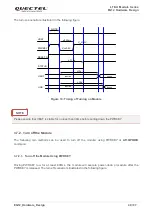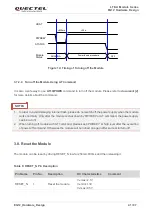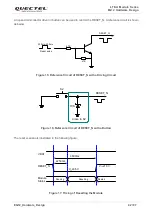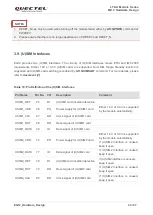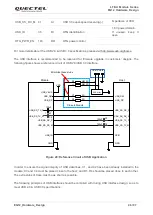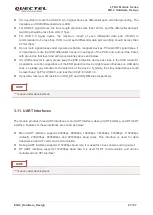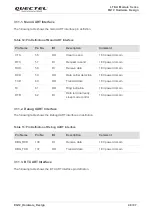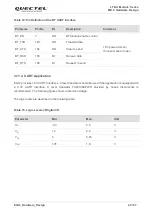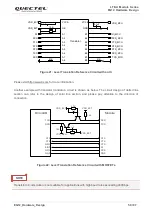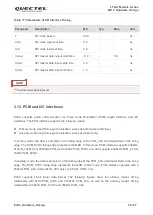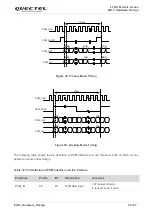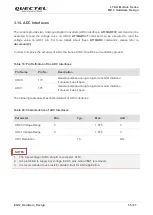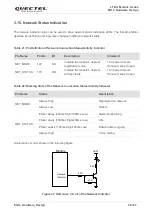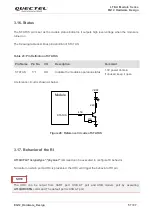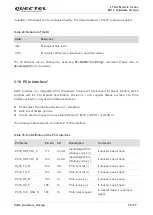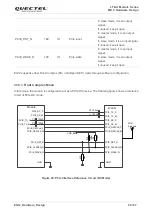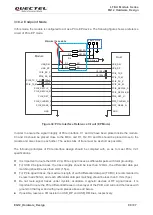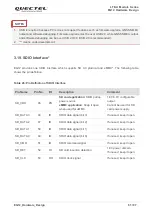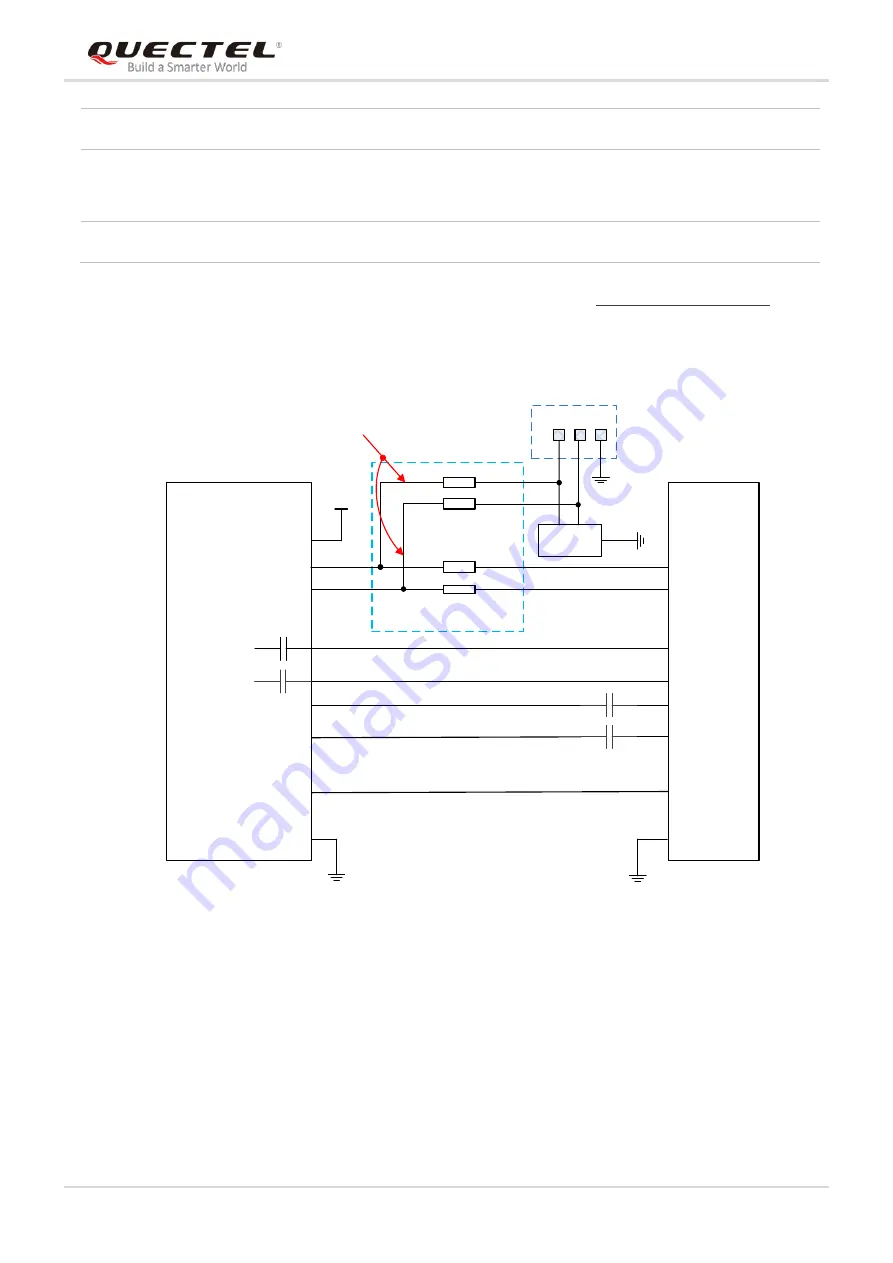
LTE-A Module Series
EG12 Hardware Design
EG12_Hardware_Design 46 / 97
For more details about the USB 2.0 & USB 3.0 specifications, please visit http://www.usb.org/home.
The USB interface is recommended to be reserved for firmware upgrade in
customers’ designs. The
following figure shows a reference circuit of USB 2.0/USB 3.0 interface.
USB_DP
USB_DM
GND
USB_DP
USB_DM
GND
R1
R2
Close to Module
R3
R4
Test Points
ESD Array
NM_0R
NM_0R
0R
0R
Minimize these stubs
Module
Host
USB_VBUS
VDD
USB_SS_TX_P
USB_SS_TX_M
USB_SS_RX_P
USB_SS_RX_M
C1
C3
C4
100nF
100nF
100nF
100nF
USB_SS_RX_P
USB_SS_RX_M
USB_SS_TX_P
USB_SS_TX_M
USB_ID
GPIO
C2
Figure 20: Reference Circuit of USB Application
In order to ensure the signal integrity of USB data lines, C1, and C2 have been already installed in the
module; C3 and C4 must be placed close to the host; and R1~R4 should be placed close to each other.
The extra stubs of trace must be as short as possible.
The following principles of USB interface should be complied with during USB interface design, so as to
meet USB 2.0 & USB 3.0 specifications.
USB_SS_ RX_M 41
AI
USB 3.0 super-speed receiving (-)
impedance of 90Ω
USB_ID
36
DI
OTG identification
1.8V power domain.
If unused, keep it
open
OTG_PWR_EN
143
DO
OTG power control

